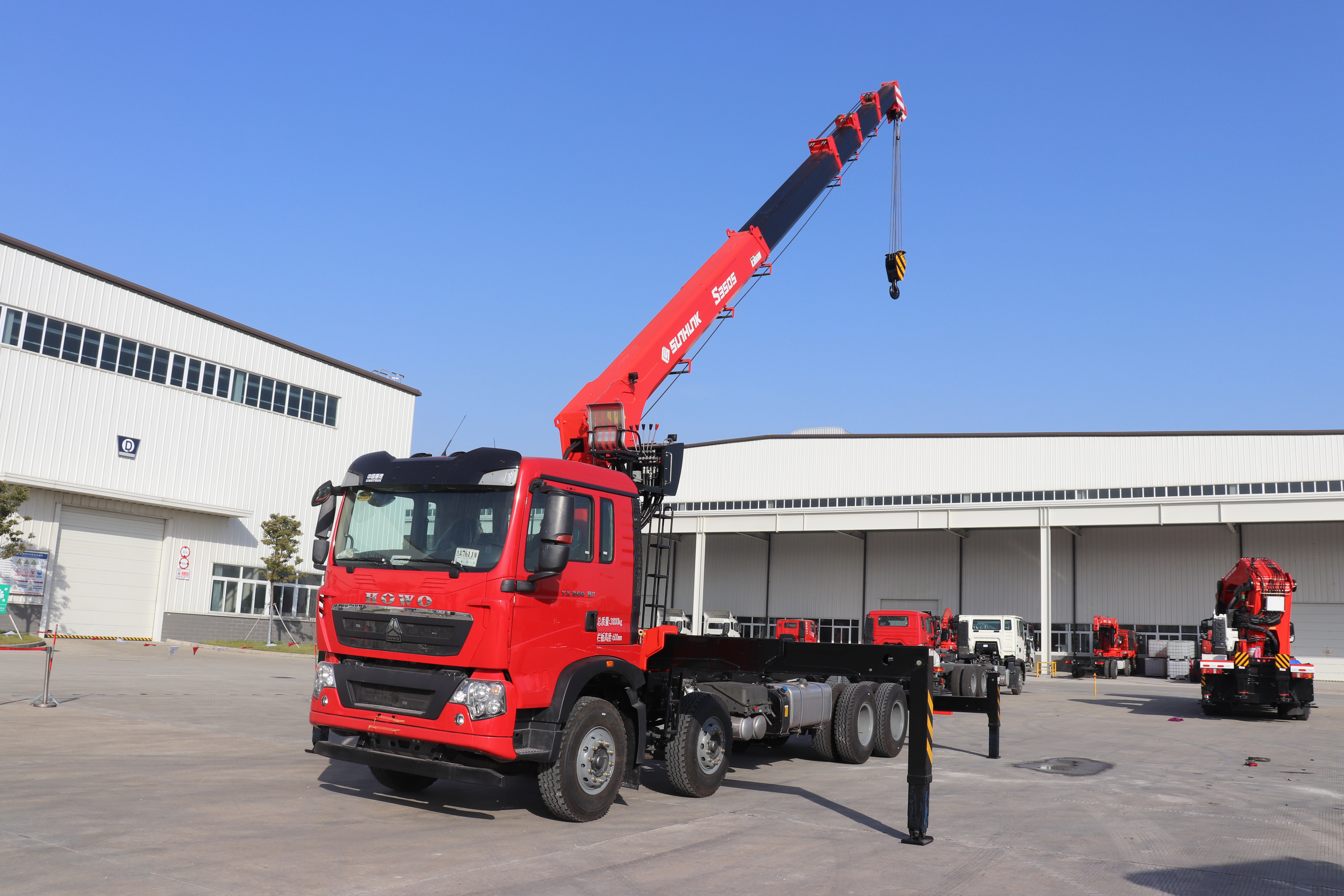- PRODUCTS
- SOLUTION
- SERVICE
- NEWS
- ABOUT US
The cost of a dump truck crane typically ranges from $20,000 to $40,000 for smaller models with a 5-ton lifting capacity, while larger models with 20 to 50 tons lifting capacity can cost between $80,000 and $200,000.
The prices of the dump truck crane vary according to its type and size, and these are also important in considering your budget for the purchase or rental of these machines. Small dump truck cranes with a lifting capacity of up to 5 tons usually cost around $20,000 and $40,000. These are very practical for small-scale construction tasks or delivering lightweight loads. They are normally used for city work, where the areas are relatively small and there is more need for easy maneuverability than heavy material-carrying capacity. A 5-ton crane is generally adequate for handling tasks like lifting construction materials, light equipment, or transportation of small tools. However, they may not be suitable for more demanding construction environments that require heavy lifting.
Larger dump truck cranes, however, like those with a lifting capacity of between 20 tons and 50 tons, may cost from $80,000 upwards, over $200,000, depending on the manufacturer and the specific features. These cranes are more powerful and can handle significantly heavier loads, making them more suitable for larger construction projects, including road construction or moving heavy machinery. As such, a 20-ton dump truck crane is usually used for the purpose of lifting steel beams or heavy concrete blocks. These kinds of cranes fall in the range of $100,000 to $150,000. The increased cost is justified by increased lifting capacity and more robust build quality that ensures reliability under more strenuous conditions.

The size of the crane also has an immediate impact on its cost of operation, mainly pertaining to fuel consumption. Thus, a small crane with a capacity of 5 tons might only consume 3 to 5 gallons of fuel hourly, while a 50-ton crane could go upwards of 15 gallons hourly, depending on the workload and model. This is a big difference in consumption that should be considered while budgeting for long-term use. Also, big cranes usually require more maintenance, and parts are specialized, increasing the overall cost of operating the crane. For example, parts such as hydraulics, engines, and lifting mechanisms in big cranes can cost in the hundreds or even thousands to replace, while smaller cranes have parts that are cheap and their maintenance frequency is low.
Another crucial aspect that determines the pricing of a crane, in addition to lifting capacity and fuel costs, is the versatility of the crane itself. At the same time, these extra features, such as the telescoping arms or hydraulic stabilizers, enhance some dump truck cranes; for example, they enable rotating 360 degrees around tight spots or rough terrain that otherwise would not be navigable. These cranes usually cost more, upwards of $150,000 to $500,000, depending on the features and brand. A specialized crane that offers increased maneuverability and extended reach can save time and labor costs on complex projects, which would make it well worth the investment despite the higher upfront cost. A crane with a 30-ton capacity and full rotation, for example, would provide greater job site efficiency in that it could place materials in hard-to-reach areas without moving the truck, hence justifying a higher price point for businesses that require such capabilities.
Picking out the right crane for your needs means balancing initial costs with long-term efficiency and maintenance. Smaller cranes apply to low budget projects or short-term duration and will not engage in hard, heavy lifting tasks, whereas larger cranes will better serve large demand projects with huge capacities for lifts. The usage frequency should also be a vital question. A crane with a larger lifting capacity will be more economical if it is to be used frequently for heavy lifting, while a smaller crane would suffice in cases where it is only to be used occasionally for lighter tasks. Besides, fuel, maintenance, and operational efficiency have to be factored in for the determination of the overall cost-effectiveness of the crane throughout its life.